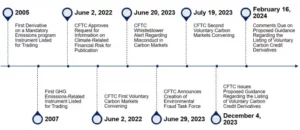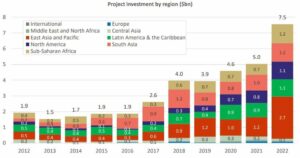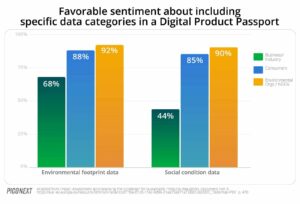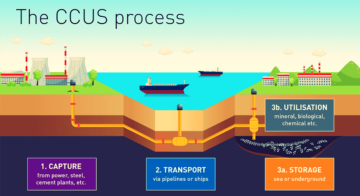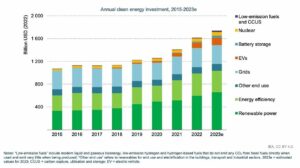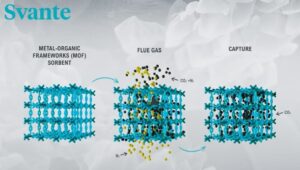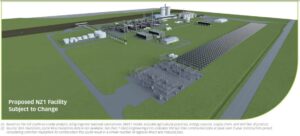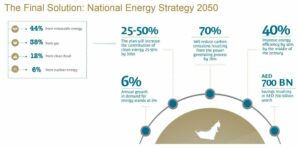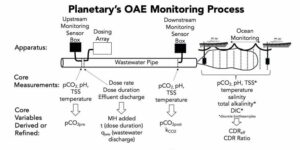In a significant development for the renewable energy sector, Fervo Energy, a Houston-based startup, has announced a breakthrough in enhanced geothermal system.
The company has successfully demonstrated the commercial viability of its enhanced geothermal system (EGS) pilot, Project Red. This marks a major stride towards the realization of dependable, carbon-free energy sources.
Fervo Energy’s EGS expands the range of sites that can be tapped for geothermal energy. This expansion has been a long-standing goal for the renewable energy industry, with efforts dating back to the 1970s.
The successful demonstration by Fervo Energy is the first instance of EGS being implemented on a commercial scale.
The company recently completed a full-scale, 30-day well test at its Project Red site in northern Nevada. The project was able to generate 3.5 megawatts of electricity, enough to power approximately 2,625 homes simultaneously.
Project Red is set to connect to the grid later this year, supplying power to Google’s data centers and infrastructure throughout Nevada. This initiative is part of a corporate agreement between Fervo Energy and Google signed in 2021 to develop enhanced geothermal systems.
Fervo and Google Team Up for 24/7 Carbon-Free Energy
Back in 2021, Google and clean-energy startup Fervo signed the world’s first corporate agreement to develop a next-generation geothermal power project. This is part of Google’s earlier commitment to use 100% carbon-free energy 24/7 by 2030. This groundbreaking initiative aims to provide an “always-on” carbon-free resource that can reduce the hourly reliance on fossil fuels.
Traditional geothermal already provides carbon-free baseload energy to several power grids. However, due to cost and location constraints, it accounts for a very small percentage of global clean energy production.
This is where the new approach comes in. By using advanced drilling, AI, fiber-optic sensing, and analytics techniques, next-generation geothermal can unlock an entirely new class of resource.
The U.S. Department of Energy has found that with advancements in policy, technology, and procurement, geothermal energy could provide up to 120 GW of generation capacity in the U.S. by 2050.
As part of their agreement, Google is partnering with Fervo to develop AI and machine learning that could boost the productivity of next-generation geothermal and make it more effective at responding to demand.
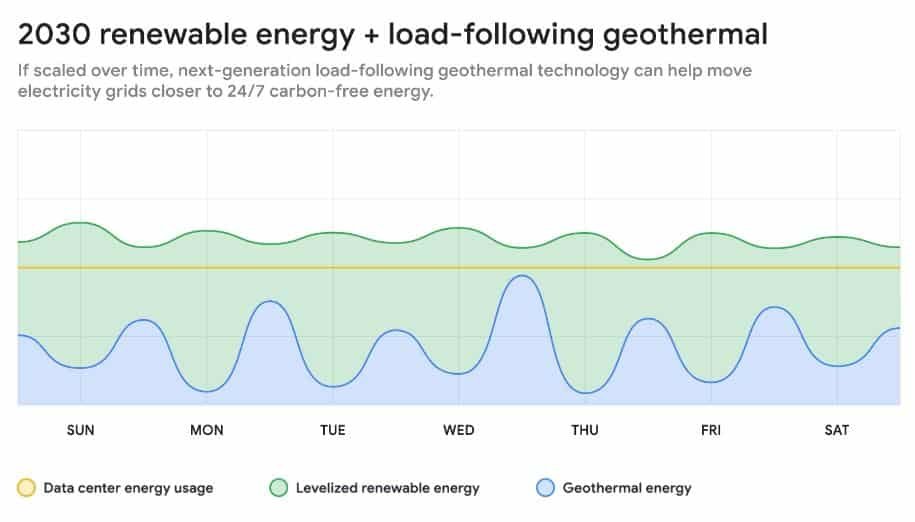

The project brings Google’s data centers in Nevada closer to round-the-clock clean energy. It also acts as a proof-of-concept to show how firm clean energy sources such as next-generation geothermal could eventually help replace carbon-emitting power sources around the world.
The Potential of Enhanced Geothermal Systems
Geothermal energy, often referred to as the “heat beneath our feet”, currently provides 3.7 gigawatts of electricity in the United States, enough to power over 2.7 million homes. However, this is just a fraction of the vast, nearly inexhaustible potential of this resource.
[embedded content]
A significant amount of geothermal energy remains inaccessible with current technology, leaving a wealth of energy untapped beneath the earth’s surface.
The development and implementation of EGS could unlock these resources, putting new, clean, and dispatchable electricity on the grid.
EGS uses man-made reservoirs to facilitate the fluid flow necessary to bring hot water to the surface for electricity production. The technical EGS potential in the United States is sufficient to meet the electricity needs of the entire world.
Even capturing a small fraction of this resource through commercial-scale deployment could affordably power 40+ million American homes and businesses.
Investments in EGS will also exponentially increase opportunities for geothermal heating and cooling solutions nationwide.
A Powerhouse for Growth
The geothermal industry can potentially become a powerhouse of U.S. economic growth, with particular benefits for rural communities. Geothermal jobs, especially in construction—which currently makes up 57% of the geothermal workforce—cannot be outsourced.
Furthermore, the similarities between the geothermal and oil and gas industries present an opportunity to transition a skilled workforce. The same goes for the tools and best practices in sourcing fossil fuels; they’re useful in producing geothermal energy.
Expanding geothermal energy can also help communities negatively impacted by fossil fuel use and production shift to clean energy.
Achieving the Enhanced Geothermal Shot, a target to reduce the cost of EGS by 90% to $45 per megawatt hour by 2035, will go a long way toward achieving President Biden’s goals of 100% carbon-pollution-free electricity by 2035 and net zero emissions across the U.S. economy by 2050.
EGS has the potential to power over 65 million American homes, according to the Energy Department.
Results from Project Red support the findings of the DOE’s Enhanced Geothermal Earthshot. They also show that geothermal energy could supply over 20% of U.S. power needs, while complementing other renewable energy sources to reach a fully decarbonized grid.
The breakthrough by Fervo Energy is a significant step towards a sustainable future. With the successful demonstration of EGS, the company has shown that geothermal energy isn’t just a resource for the future. It is a viable solution for today’s energy needs, powering millions of homes and businesses.
- SEO Powered Content & PR Distribution. Get Amplified Today.
- PlatoData.Network Vertical Generative Ai. Empower Yourself. Access Here.
- PlatoAiStream. Web3 Intelligence. Knowledge Amplified. Access Here.
- PlatoESG. Automotive / EVs, Carbon, CleanTech, Energy, Environment, Solar, Waste Management. Access Here.
- BlockOffsets. Modernizing Environmental Offset Ownership. Access Here.
- Source: https://carboncredits.com/fervo-energys-breakthrough-in-enhanced-geothermal-systems-a-game-changer-for-renewable-energy/
- :has
- :is
- :where
- $UP
- 2021
- 2030
- 2050
- 65
- 7
- a
- Able
- According
- Accounts
- achieving
- across
- acts
- advanced
- advancements
- Agreement
- AI
- aims
- already
- also
- American
- amount
- an
- analytics
- and
- and infrastructure
- announced
- approach
- approximately
- around
- AS
- At
- back
- BE
- become
- been
- being
- benefits
- BEST
- best practices
- between
- boost
- breakthrough
- bring
- Brings
- businesses
- by
- CAN
- Capacity
- Capturing
- Centers
- class
- clean energy
- closer
- comes
- commercial
- commitment
- Communities
- company
- Completed
- Connect
- constraints
- content
- Corporate
- Cost
- could
- Current
- Currently
- data
- data centers
- Dating
- Demand
- demonstrated
- Department
- Department of Energy
- dependable
- deployment
- develop
- Development
- due
- Earlier
- Economic
- Economic growth
- economy
- Effective
- efforts
- electricity
- embedded
- Emissions
- energy
- energy use
- enhanced
- enough
- Entire
- entirely
- especially
- eventually
- expands
- expansion
- exponentially
- facilitate
- findings
- Firm
- First
- flow
- fluid
- For
- fossil
- Fossil fuel
- fossil fuels
- found
- fraction
- from
- Fuel
- fuels
- full-scale
- fully
- future
- game-changer
- GAS
- generate
- generation
- geothermal energy
- Global
- Go
- goal
- Goals
- Goes
- Google’s
- Grid
- groundbreaking
- Growth
- help
- Homes
- HOT
- hour
- How
- However
- http
- HTTPS
- impacted
- implementation
- implemented
- in
- inaccessible
- Increase
- industries
- industry
- Infrastructure
- Initiative
- instance
- IT
- ITS
- Jobs
- jpg
- just
- later
- learning
- leaving
- location
- Long
- long-standing
- machine
- machine learning
- major
- make
- MAKES
- max-width
- Meet
- million
- millions
- more
- Nationwide
- nearly
- necessary
- needs
- negatively
- net
- NEVADA
- New
- next-generation
- of
- often
- Oil
- Oil and Gas
- on
- opportunities
- Opportunity
- Other
- our
- over
- part
- particular
- partnering
- per
- percentage
- pilot
- plato
- Plato Data Intelligence
- PlatoData
- player
- policy
- potential
- potentially
- power
- Powering
- practices
- present
- president
- procurement
- producing
- Production
- productivity
- project
- provide
- provides
- Putting
- range
- reach
- realization
- recently
- Red
- reduce
- referred
- reliance
- remains
- Renewable
- renewable energy
- replace
- resource
- Resources
- responding
- Rural
- s
- same
- Scale
- sector
- set
- several
- shift
- show
- shown
- signed
- significant
- similarities
- simultaneously
- site
- Sites
- skilled
- small
- solution
- Solutions
- Source
- Sources
- Sourcing
- startup
- States
- Step
- stride
- successful
- Successfully
- such
- sufficient
- supply
- supplying
- support
- Surface
- sustainable
- sustainable future
- system
- Systems
- Tapped
- Target
- team
- Technical
- techniques
- Technology
- test
- that
- The
- The Future
- the world
- their
- These
- they
- this
- this year
- Through
- throughout
- to
- today’s
- tools
- toward
- towards
- transition
- u.s.
- U.S. economy
- United
- United States
- unlock
- untapped
- use
- uses
- using
- Vast
- very
- viability
- viable
- Video
- W3
- was
- Water
- Way..
- Wealth
- webp
- WELL
- while
- will
- with
- Workforce
- world
- world’s
- year
- youtube
- zephyrnet
- zero

